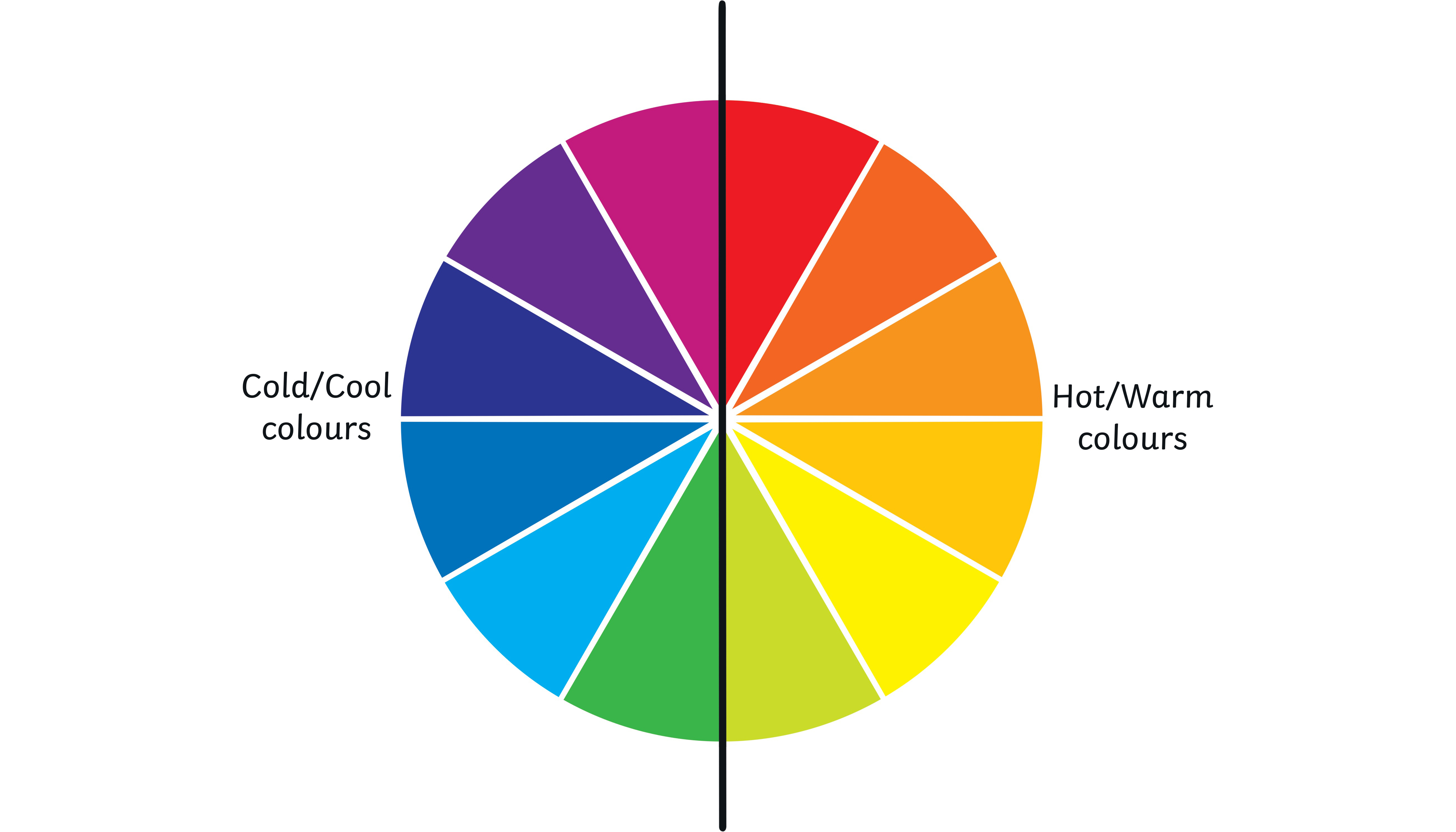

The colour wheel is a tool artists and other creative people use to help them decide which colours to use. It’s linked to colour theory, which is like a set of guidelines about which colours work well together for different purposes. The colour wheel can show every colour or be split into sections. Here is how it could be split:

Colour is an element of art so will be introduced to your child during their art and design lessons in primary school, most likely during key stage 1 (aged 5-7). They might create a simple colour wheel showing primary and secondary colours using paints. Mixing colours on a palette is a fantastic way to learn how the colour wheel works.
Learn about colour theory with this informative PowerPoint. This underpins the colour wheel - here’s a poster version that shows primary, secondary and tertiary colours. See if your child can use these colour mixing signs to mix the colours of the wheel. Draw around a circular object onto blank paper and split this circle into 6 or 12 sections, depending on whether you want to try mixing tertiary colours or not. Your child might also enjoy this warm and cool colours art activity.
Some ingredients and/or materials used might cause allergic reactions or health problems. You should ensure that you are fully aware of the allergies and health conditions of those taking part. If you have any concerns about your own or somebody else’s health or wellbeing, always speak to a qualified health professional. Activities listed within the resource should always be supervised by an appropriate adult. Children should be supervised when using sharp items such as scissors or other tools. Please make sure you are aware that children may put craft items into their mouths, and that they should wash their hands afterwards. By using this resource, you acknowledge that it is the responsibility of supervising adults to ensure the safety of children in their care and that we will accept no liability as a result of the activity.
 Home
Home  Membership
Membership  Customer Support
Customer Support  Create
Create  Blog
Blog 




















